[rev_slider_vc alias=”hungary-budapest”]
Exploring Hungary:
A travel story from Budapest
By Nicoleta Baeva
First Impressions
I got the chance to visit Budapest during my exchange semester in Austria in the latter half of 2019. At first, it wasn’t even on my must-visit list — but a few of my fellow exchange students were eager to go and invited me along for a weekend trip. Thank God they did, because it turned out to be one of the most memorable experiences of my semester abroad. My first impression of Budapest completely took me by surprise.
This vibrant capital feels like a living museum, a celebration of Hungarian history and culture. From the grandeur of the Parliament and Buda Castle to the city’s many memorials and monuments, Budapest invites you to explore its past while experiencing its rich, present-day culture. On that first visit, the grey-toned architecture combined with the gloomy autumn weather gave the whole city this dreamlike, cinematic atmosphere — almost like a Wes Anderson film set come to life.
But beyond its majestic buildings, thermal baths, and legendary ruin bars, what stood out to me most was how much potential Budapest has for fair and responsible tourism. The city offers endless things to see and do, but also countless ways to experience it more ethically, by supporting small businesses, choosing local experiences, and respecting the city’s unique identity. Learn more on what fair tourism looks like and why it is important here!
With its efficient metro system (four crisscrossing lines that can take you almost anywhere), Budapest is incredibly accessible, even for a weekend trip. But I quickly learned that the real value of visiting isn’t just in checking off tourist highlights, it’s in traveling consciously and supporting local communities along the way. (More on that later!)
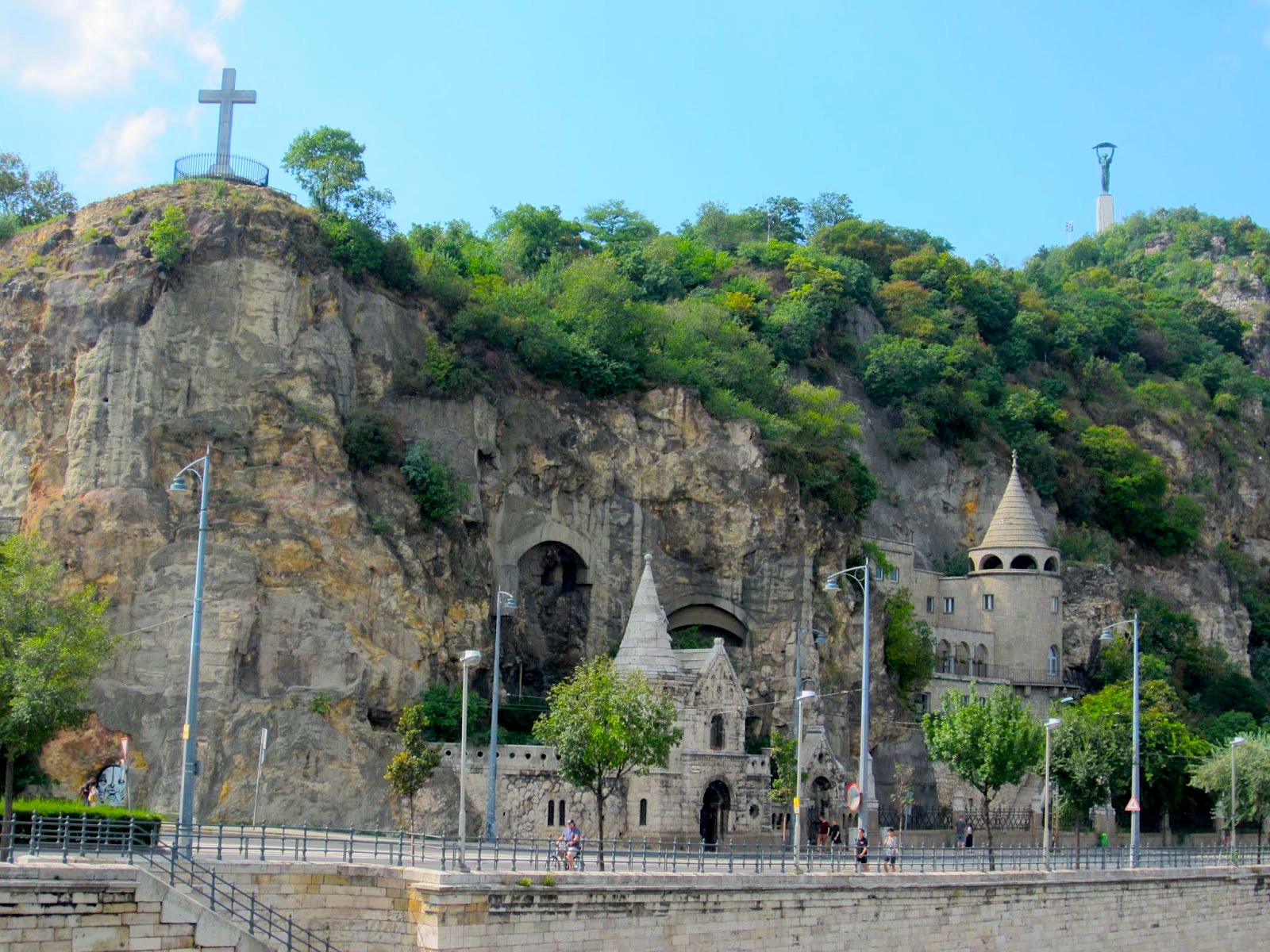
History
The history of Budapest began as Aquincum, originally a Celtic city that became the Roman capital of Lower Pannonia. In the 9th century, Hungarians came to the territory. Their first built city was plundered in 1241-42 by the Mongols. By the 15th century, the re-established city became one of the centers of humanistic Renaissance society. In the 18th and 19th centuries, after the Battle of Mohács and nearly 150 years of Ottoman rule, the region entered a new era of prosperity, and after its unification in 1873, Budapest became a global capital.
It also became the Austro-Hungarian Empire’s co-capital, a great power that collapsed after World War I in 1918. Budapest was the focal point of the 1848 Hungarian Revolution, the Hungarian Republic of Councils in 1919, the Battle of Budapest in 1945 and the Hungarian Revolution of 1956. In a nutshell, Budapest experienced many wars, invasions, liberations, just to be reoccupied again.
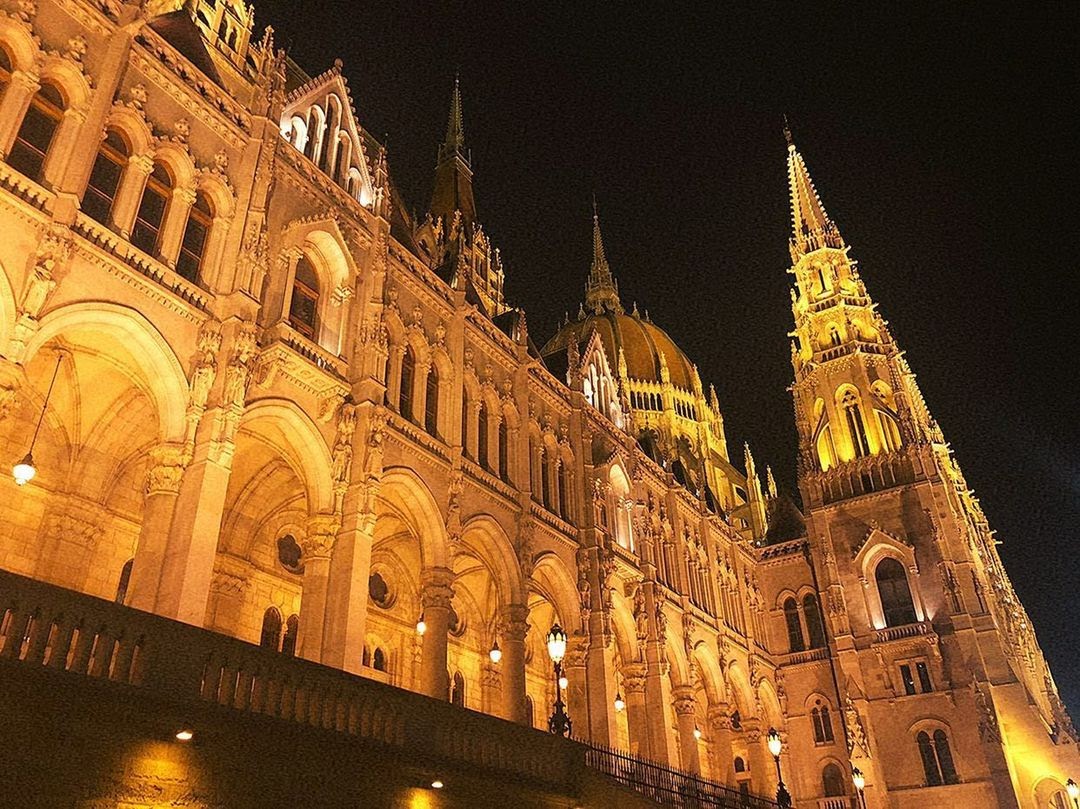
Fun Fact:
Budapest is actually what once used to be two separate cities straddling the Danube: Buda on the west side: classy and with lots of hills and Pest (pronounced “pesht”) on the east with its flatter surface and “wilder” vibe.
Each section has its own identity, as if the river not only geographically but metaphysically separates the city as well. But combined, they make a great explosion of city madness. As aforementioned, Buda and Pest are separated by the Danube river and connected by Széchenyi Chain Bridge, which is an almost 400 metres long wrought-iron and stone suspension bridge. My group and I crossed the bridge on foot, which is possible as there are sidewalks on both sides. We really loved the view and could not help it but stop for a quick photo session.
Tourism & Culture
The Hungarian parliament building
This is the largest building in Hungary and it’s the third largest parliament in the world. I can firmly state that the Hungarian Parliament is most certainly the most magnificent parliament building that I have seen. Home to the parliament of Hungary, the Parliament Building is one of the iconic neo-gothic buildings in all of Europe.

Ruin Bars
What’s really unique about contemporary Budapest, you may ask? I would say it is Ruin Bars. Budapest has been stormed by these unexpected hip drinking joints hidden within neglected pre-war houses. They are found in Budapest’s District VII (the old Jewish Quarter) in the ruins of abandoned buildings.
This area was left to decay after World War II, making it a great opportunity to transform buildings into a bar scene.What I find really cool is that from the outside, these bars look like conventional homes (no large signs or screaming lines of waiting people). Around those ruin bars, you’ll also encounter art exhibits, dance parties and flea markets alongside affordable cocktails. Although each ruin bar has its own vibe, I personally found Szimpla Kert to be the most worth-seeing , the first-ever ruin bar that opened in 2001.
Fisherman’s Bastion
Perched on Castle Hill, Fisherman’s Bastion (or locally known as Halászbástya) is a gorgeous spot to lookout over the city. My group and I not only went to the Fisherman’s Bastion itself, but we also explored the older side of Buda a bit, which I found to be magnificent. Think, stunning houses, cobbled streets and lovely little cafes. In my opinion it is one of the best things to do in Budapest.
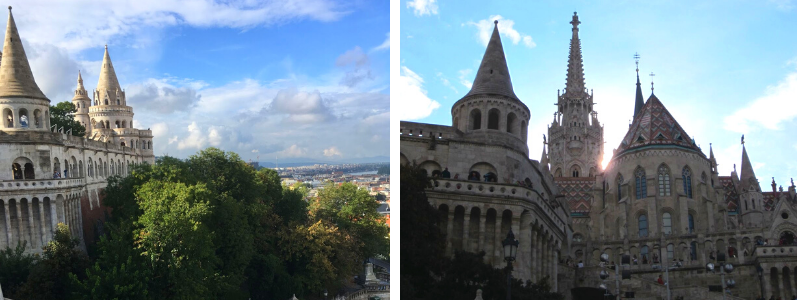
Hungarian cuisine
Hungarian food is known for having heavy dairy presence and being fatty and not very light, which may intimidate tourists at first. However, fear not, as this cuisine is really varied and there is something for each and every taste. The foods I personally had the opportunities to try are goulash (but of course, I had to), Kürtőskalács and Hungarian Fried Lángos. As it is the first dish that comes to mind when Hungarian cuisine is mentioned, you will find goulash almost everywhere in the city. However, according to locals I have spoken to, there are only a few places where “they make it very nicely”.
Vegan Goulash:
The restaurant where I ate vegan goulash was in fact recommended by a local and I absolutely loved it. The place is called Napfényes Restaurant and Confectionery: I highly recommend it, as they also have amazing vegan pizza. An interesting fact is that Goulash dates back to the 9th century and would be consumed by Hungarian shepherds. Secondly, Kürtőskalács is a sweet yeast chimney cake and it looks like… a chimney and with a chocolate topping (at least the one I tried). Apparently Kürtőskalács is specific to Hungarians from Transylvania, more specifically the Székelys (a subgroup of the Hungarian people living mostly in the Székely Land in Romania).

Must try: Lángos
Lastly, the Hungarian Fried Lángos (a deep fried flatbread) was also really good. Unfortunately, I was not staying long enough to try more traditional foods, but I most certainly want to revisit and do that one day. Here I must mention the food markets of Budapest that left me mesmerised. During our walking tour, we stumbled upon an alleyway called Gozsdu Udvar. It is like an outside market with a bunch of restaurants. You may also want to check out The Great Market Hall or Central Market Hall, (Hungarian “Nagyvásárcsarnok”) which is the largest and oldest indoor market in Budapest.
Memento park
The Communists liked constructing sculptures and statues, so during their years behind the Iron Curtain, the city was packed with them. When communism ended in Budapest, nearly all these monuments were taken down and transferred in a park on the outskirts of town. It is interesting to see all these mementos at one place and reflect on the past.
Shoes on the Danube Bank.
The memorial remembers the atrocities of those killed during World War II where people were told to take their shoes off before being killed and horribly thrown into the river. It really is a touching and emotional thing to see.
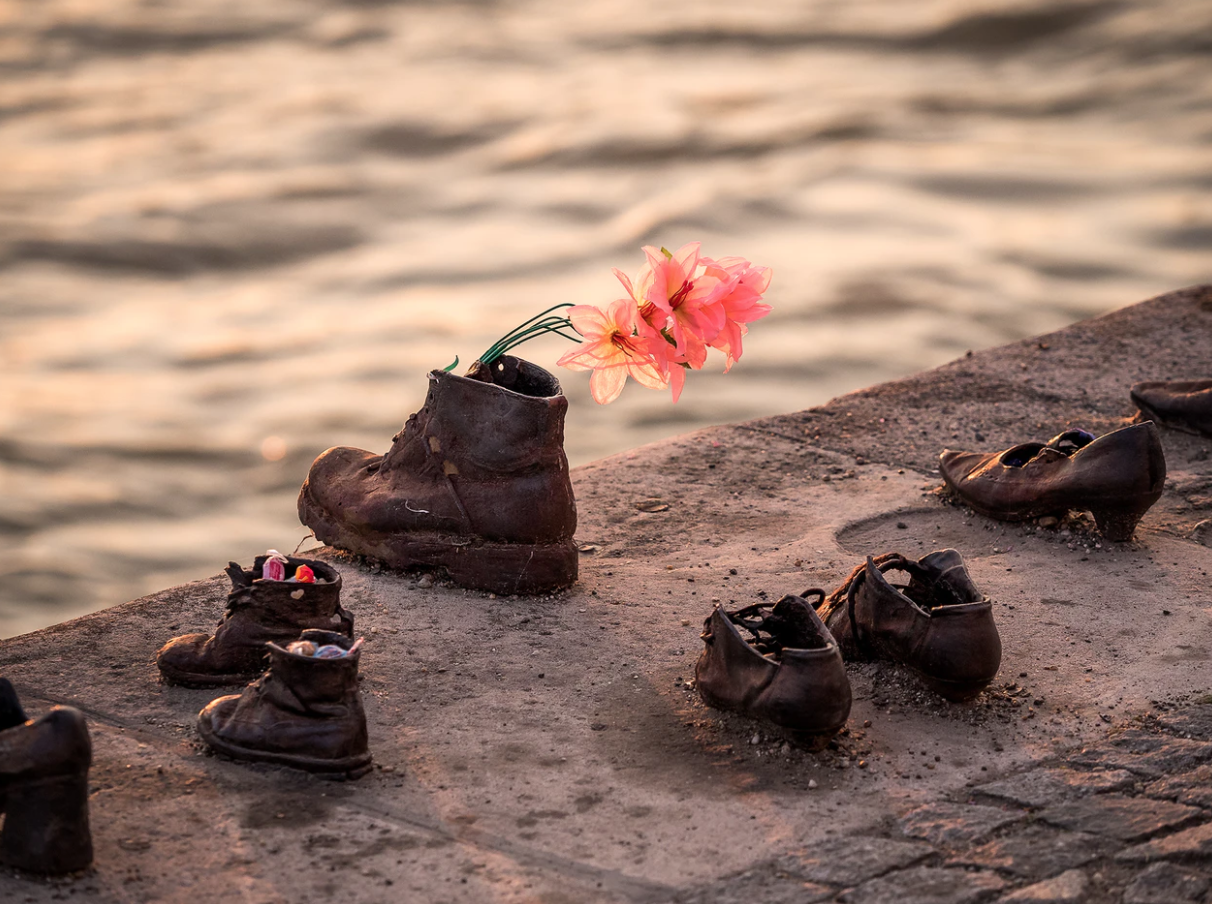
Dohány Street Synagogue
Also known as the Great Synagogue, this is the second-largest synagogue in the world, built in 1854 with seating for 3,000 people.
Danube promenade
The banks of the Danube river are listed as a UNESCO World Heritage Site, so you should spend some time visiting the Danube Promenade. It’s also a great place to see many of Budapest’s best sights.
Payments
When making payments, it should be noted that although Hungary is part of the European Union, it uses its own currency, the Hungarian Forint. As contactless payment is becoming more common, it is not necessary to carry cash in many tourist areas. However, it is still not possible to pay by card in some places. Therefore, I advise you to find out more about this beforehand, especially if you are planning a longer stay.
Locals
While abroad I met and befriended quite a lot of Hungarians, from different regions of the country. This was especially the case during my Erasmus in Austria, as the university’s international student community consisted mainly of Hungarians. As a result, I got to spend time and work with Hungarians both in my free time and professionally. That being said, the overall impression I got was most certainly positive. Ambitious, hard-working, driven and with an affinity for foreign languages are some common traits that my acquaintances shared.
These connections gave me a more personal insight into Hungarian culture, beyond just the surface of tourism. It’s also one of the reasons why, when I visited Budapest, I wanted to travel in a way that genuinely supports local communities — by choosing small, local businesses, avoiding tourist traps, and respecting the people and stories behind the city. In a city as dynamic as Budapest, fair and responsible tourism isn’t just possible — it’s essential.
Final impression
Getting to know Budapest for the short period I spent there, I noticed and felt the influence from various different countries and times in history. I noticed influences of the Magyars, Austrians, Romans, Turks and Soviets. It feels like they all, in one way or another, have left their mark on Budapest and helped to shape the city to what it is today. I would go as far as saying that the city has something for everyone, no matter their taste and preferences. Budapest turned out to be a curious mix of things.
While sitting in this Flix Bus and reflecting on our experience on the way back to Vienna, me and my fellow travel buddies agreed that the feeling invoked by being in the city was hectic, yet simultaneously rustic at times, beautiful, but still rough around the edges. All in all, Budapest was an interesting, enjoyable city. Even though I felt like we saw a lot during our 3 days in Budapest, I still think we barely scratched the surface of what the city has to offer.
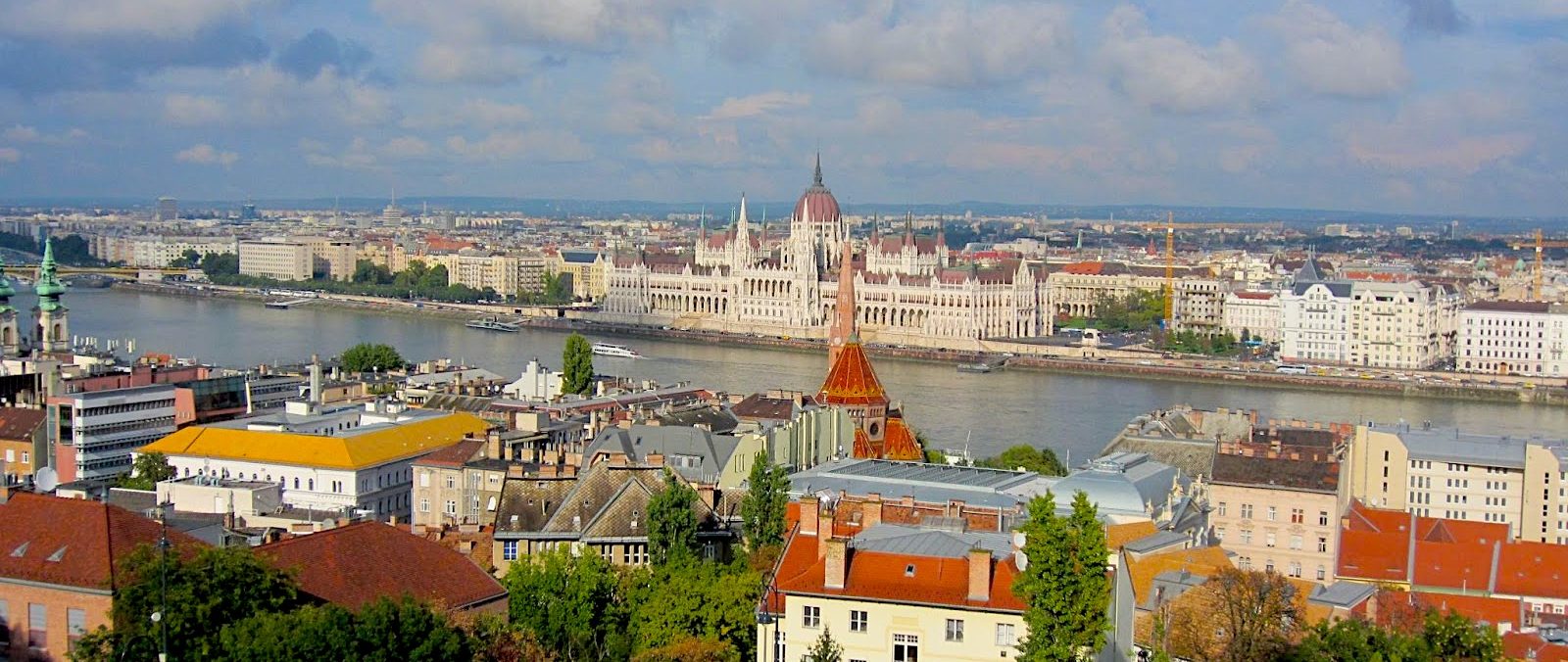

This Post Has 0 Comments